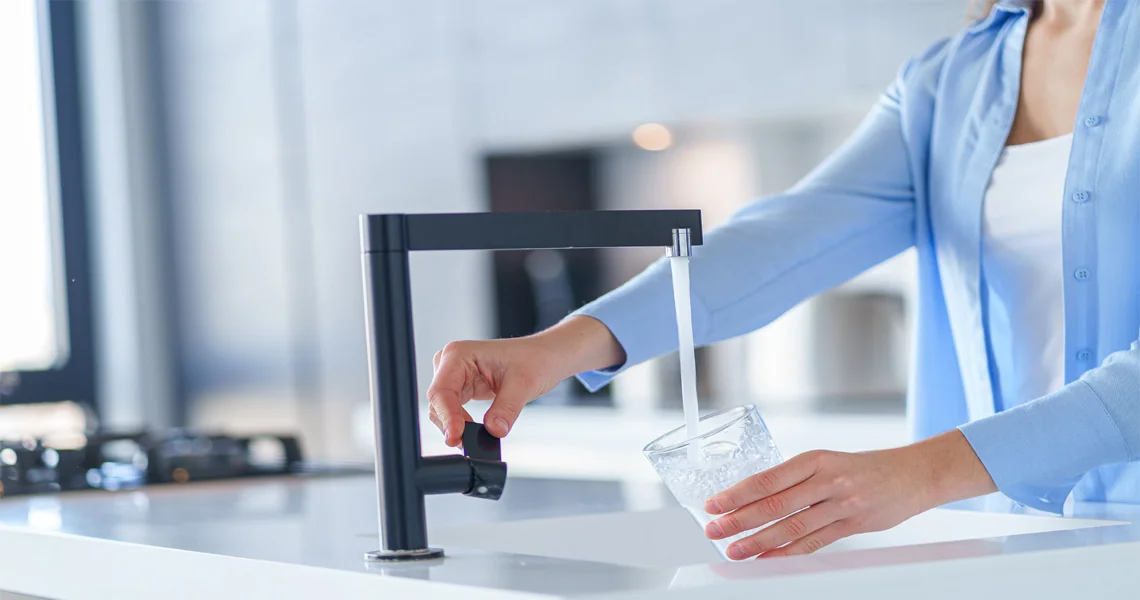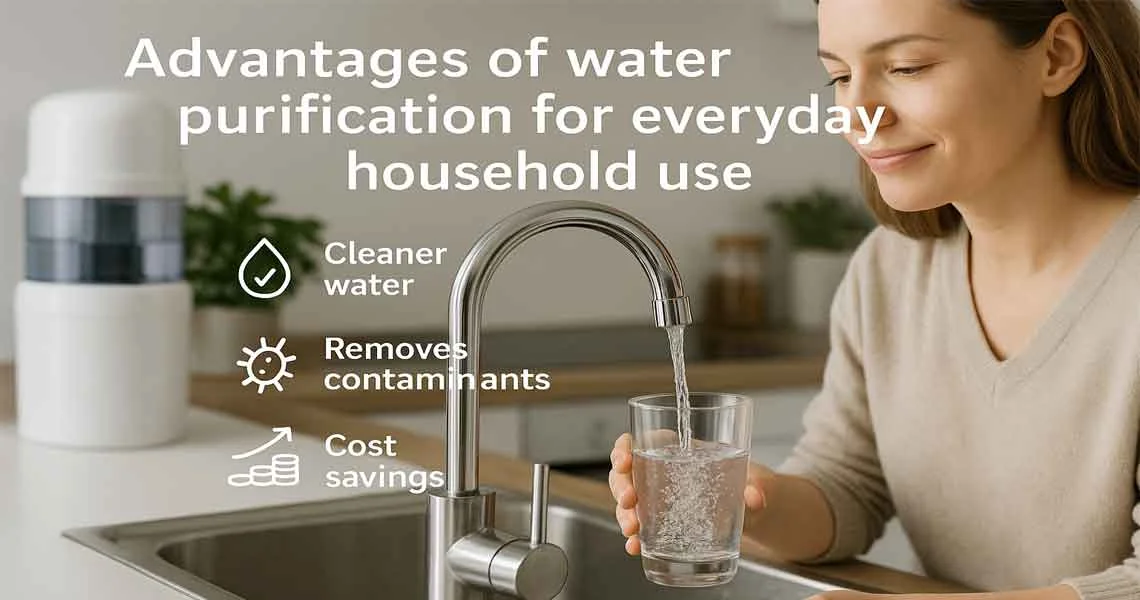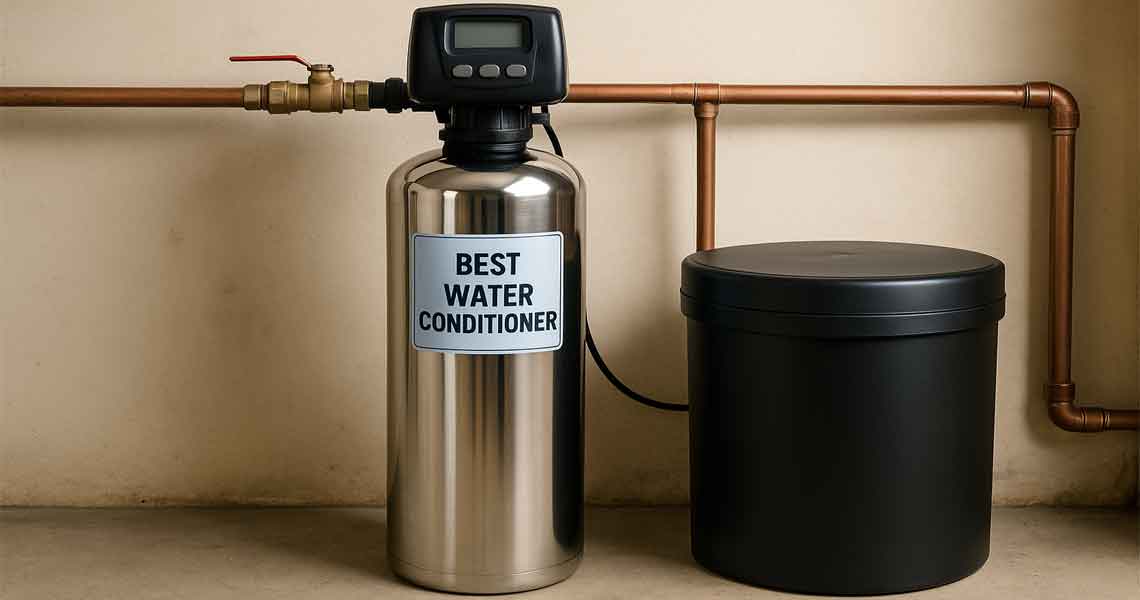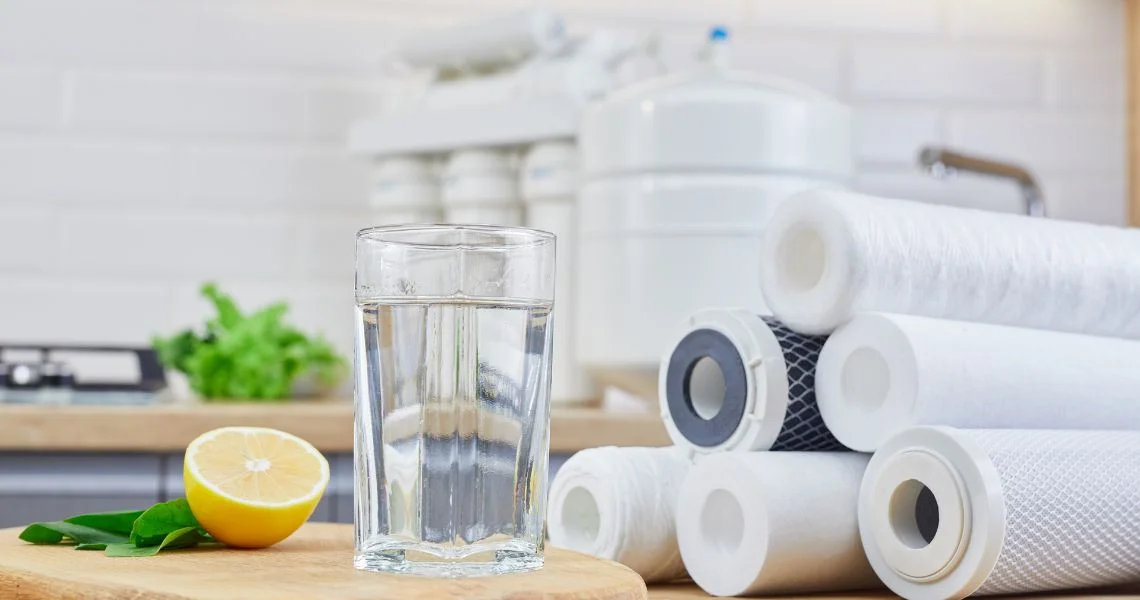Many individuals wonder whether their tap water is free of bacteria with a water filter. Since clean water is vital, it makes sense to wonder if a filter removes germs, too. Regrettably, not every filter will kill or capture bacteria.
In fact, most water filter claims about water filter remove bacteria are false – typical pitcher and faucet filters use carbon cartridges that filter for taste and chemicals, not bugs. The CDC agrees; however, “most home water filters — including pitcher and faucet-mounted filters — are not designed to remove germs.” So, you should be wary of a bare-bones water filter that claims to remove bacteria; you need sound technology to effectively disinfect your water.
Why Simple Filters Can’t Remove Bacteria
The average carbon filters and pitchers do a good job of improving taste by trapping chlorine and organic components, but they cannot remove bacteria. Studies have demonstrated that activated carbon filters have “no significant effect on total bacteria retained.
A traditional filter is ineffective at trapping microbes — it can catch sediment or rust, but bacteria and viruses pass through. Worst of all, bacteria can develop on a soiled carbon filter if it is left too long. That’s because a straw with a simple filter doesn’t cut it as a method for sterilizing water: Germs will pass (or even grow) through it, unless the gadget is designed to also remove microbes.
Community water systems use disinfection (chlorine or ultraviolet light) to kill germs. If your filter removes those disinfectants without including a kill step of its own, you may be left with more bacteria in your pipes.
According to the CDC, germs can grow in plumbing if chlorine/disinfectants have been removed. In the real world, you need a special technology for a water filter to kill bacteria, and it’s not just a simple cartridge.
Filter Technologies that Remove Bacteria
Here are the filtration methods that truly remove or kill microbes:
- Ultraviolet (UV) Sterilizers: UV light kills off bacteria and viruses. A UV stage uses short-wave light to destroy bacteria, making the water microbe-free. (UV doesn’t catch particles, so it’s frequently paired with pre-filters for clarity.)
- Reverse Osmosis (RO): This is a system that passes water through a tight, winding, spiral that is forced through a very fine membrane (0.0001 micron). This semi-permeable membrane filters bacteria, viruses, particulates, and heavy metals. Maintenance is in place to ensure that an RO unit removes nearly all pathogens from our water.
- Ultrafiltration/Nanofiltration: This is the same as RO except with membranes of larger size (0.01–0.1 micron). These membranes can trap bacteria and cysts. Filters must be 0.3 microns pore size or less to trap most bacteria, according to CDC recommendations. Many under-sink purifiers incorporate UF/NF for enhanced security over carbon alone.
- Ceramic Filters: These filters are made up of a ceramic cartridge that is baked with tiny pores (~0.5–1 micron). High-quality ceramic filters capture bacteria and other pathogens using physical means. They can be effective, but the pores need to remain clean (usually by scrubbing) to function correctly.
- Whole-House Multi-Stage Systems: These utilize different techniques for full coverage. For instance, a system could have sediment + activated carbon + UV (or RO) in a succession. The result of this is that all of the water entering your home is treated. Such systems frequently claim to eliminate “chlorine, heavy metals, pesticides, and bacteria” – i.e., water that is genuinely free of bacteria, throughout the house.
Not all filters can make a water filter bacteria-proof; only filters containing ultra-fine membranes or that have a sterilization step in their system can. It’s similar to the distinction between a colander (large holes) and a sieve (microscopic holes or UV light). So, choose certified options for proper security.
Choosing a Filter Rated for Bacteria Removal
If bacteria are a concern, look for these features:
- Pore Size: The filter’s pores should be small enough for bacteria to pass through. Filters that remove bacteria use 0.3 micron or larger pore sizes, according to the CDC. Reverse osmosis and ultrafiltration qualify.
- NSF/ANSI Certifications: Look for product labels that include the NSF standards. Standard 55(UV) or 58 (RO) can also have microbial reduction. Certified products will list exactly what they block.
- UV Treatment: Filters with a UV stage are meant to kill bacteria. This is also something that’s added on to under-sink or whole-house systems.
- Maintenance: A filter is only good if it’s new. CDC says replace cartridges on time and stop germs from growing. Old and clogged filters can become breeding grounds for bacteria. Wear gloves to change filters, according to the CDC.
- Water Testing: What’s in your supply? If you have a well, test the water for bacteria annually. Knowing your water quality helps you select the appropriate technology — if there are bacteria in it, choose a filter that removes microbes.
How Wellness Water Purification Helps
At Wellness Water Purification, we provide systems that truly make a water filter remove bacteria:
- Whole-House Filtration System: Provides filtered water at every tap. It features multi-stage filtration (sediment + carbon + UV/RO), ensuring that every time you open a tap, you receive filtered, bacteria- and virus-free water.
- Under-Sink Reverse Osmosis: A dedicated drinking-water system that can remove one to two gallons of water per hour. In feeding, water is pre-filtered (carbon) and then pushed through an RO membrane (and optional UV). This eliminates bacteria, viruses, heavy metals, and chemicals from your drinking water.
- UV Sterilizers: An in-line UV unit that mounts on any line. It saturates water with UV light to kill bacteria and viruses. Use it with any filter you choose for complete germ protection.
- Softeners & Alkaline Systems: Minimize minerals and raise pH if you’re in a hard water region. (These address hardness and pH; they do not kill germs, so we add filters or UV for complete safety.)
Our product utilizes the technology mentioned above, not just plain carbon. For instance, the Wellness Water system “removes pollutants and adds healthy minerals…making it great for drinking, cooking and even bathing”. Our customers marvel at the taste and health benefits of our treated water – and can do so with the peace of mind that it actually eliminates bacteria and other dangers.
We also make maintenance easy. We walk you through filter changes and system care. (CDC even recommends wearing gloves to change used filters.) If you follow these guidelines, your filter will continue to remove bacteria as intended.
Make the Safe Choice for Your Family
Your family needs clean, safe water every day. Don’t be fooled by a basic faucet filter claiming to remove bacteria without any evidence. Select an authorized Wellness Water Purification Systems product. Get in touch now for a free water test and system quote. Our specialists will make sure the water filter removes bacteria is not just a slogan, but a fact in your home!
Ready for worry-free drinking water? Visit WellnessWaterPurification or call now to learn about our water purification products. We even take the guesswork out of it with free water-quality testing to determine the extent of what’s in your supply, including bacteria.
Invest in better health for your family with a system that effectively eliminates bacteria and other contaminants. Take action for clean, safe water NOW — your health depends on it!





